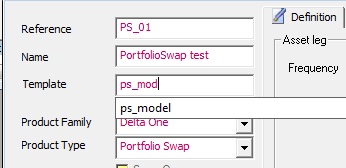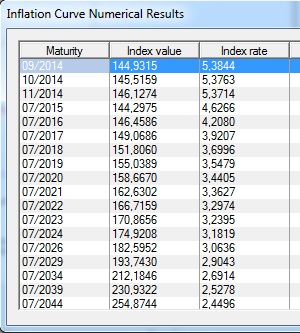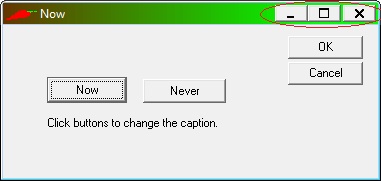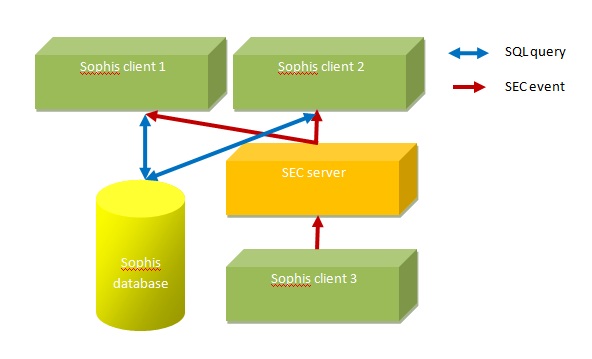By Philippe Bonneau on
12/7/2014 8:01 PM
The root cause of needing this information is that we want to display user portfolio columns on which we need to calculate aggregation. I've already seen some client implementation on which the aggregation is calculated when the callback CSRPortfolioColumn::GetPositionCell is called, when detecting any change on the GetRefreshVersion of the same class.
The advantage is that this code is called only if the column is displayed, but unfortunately, that's not the right way to do it and for this reason:
- on GetPositionCell, we don't know at which level we need to calculate the aggregation and the parsing of all folios is then needed. When many folios are already loaded, it decreases dramatically the performances and the software freezes in most cases.
- on the CSRGlobalFunctions, Misys provides a method, StartPortfolioAddition, which is called each time that the core engine needs to make an aggregation. For instance, changing the currency of a folio will call this method, with the folioId corresponding to the root folio on which the aggregation needs to be recalculated.
In the last case, the method does not give the list of columns on which we need to aggregate. To detect it, Misys provides unfortunately no official and supported method.
The goal of this post is to give the way to get it, in all Sophis versions.
|
By Philippe Bonneau on
11/30/2014 9:37 PM
I've already implemented several times user columns at the clients of Misys. Each time, taking a look at the developments already done by the client or specific deliverables made by Misys, I encounter the same problems of performance, which are:
- in most cases, no memory cache is implemented, calculations are done on the fly, with, last but not least, direct access to the database, sometimes hidden by the complexity of the Sophis API,
- if a memory cache is implemented, the refresh is not necessary very well optimized. In most cases, no SEC listener is developped and the refresh is done according to the version given by CSRPortfolioColumn::GetRefreshVersion.
- calculations of aggregations are done on CSRPortfolioColumn::GetPositionCell (or CSMPortfolioColumn.GetPositionCell in C#) instead of being implemented in the CSRGlobalFunctions::StartPortfolioAddition or EndPortfolioCalculations, with no indication on the level on which the aggregation should start. It means that for each refresh needed, the algorithm implemented will parse the whole portfolio hierarchy each time. If all folios are loaded, the parsing can freeze the whole GUI.
The goal of this post is then to give the rules for implementing user columns as it should.
|
By Philippe Bonneau on
11/30/2014 9:25 PM
This week, I just wondered why the Sophis R&D didn't permit to override the CSRGlobalFunctions class in C# before the 6.3 version. If you take a look at the DotNet toolkit, you will see that a CSMGlobalFunctions is defined, but no static method Register exist as for the other classes. This point was several times scrolled up to Sophis in the toolkit forums, and I know some clients who ask Sophis to provide a toolkit permitting their own implementation. Unfortunately, they don't have the code and the interface provided in C# does not implement all virtual of CSRGlobalFunctions, for instance StartPortfolioAddition which is a callback on which we can implement the agregation of results for user columns that we want to store in a cache.
For remember, the overriding of the CSRGlobalFunctions class permits to be called when the folios are calculated (StartPortfolioCalculation, EndPortfolioCalculation).
The goal of this post is to describe how to implement a C++ implementation of the CSRGlobalFunctions that permits to implement callback in C#.
|
By Philippe Bonneau on
10/29/2014 11:47 PM
Working on a migration to the last version of Fusion Invest (7.1.x), and even if most Sophis developers warn me that this class will be deprecated in future versions of Sophis Risque/Value, I've discovered how deep changes were done on it.
Trying to migrate my performance tool ITQLogger in order to test the new grid cache server, I've got a lot of modifications to do and most cases are now obsolete..
For remember, for those who don't know this class, it was previously mostly used by developers in this case:
- changes are done on database, without using the API,
- other programs connected to this database have to be notified, to refresh the data.
For example, the last development I've made using a Sophis native 'AJTI' event was done when I had to insert directly in the TRS_BASKET and TRS_BASKET_ADJUSTMENT Oracle tables records, and notify other GUI clients that the instrument was modified. Such development was done due to the well-known poor performance on Sophis basket swaps, making it impossible to use the native CSRInstrument::Save method when a lot of adjustments are done (like on portfolio swaps).
The goal of this post will discuss which workarounds have to be done.
|
By Philippe Bonneau on
10/10/2014 8:07 AM
Using the Sophis toolkit, it is possible to display a list when typing in a edit control. For example, in the default native transaction dialog, some references of instruments appear once the first characters are filled. The class that permits to reproduce this behaviour is CSRInstrumentCode which inherits from CSRGenericAutoCompletion. According to the comments provided in the sphcode.h header, there should be a sample in a SphSrc/AutoCompletion folder... Unfortunately, I haven't found such a sample, and looking for questions/answers on the Sophis support forum, I only have found one question without answer. This post will show how to implement some code in order to get the expected result, it means giving a list of results when typing some characters as follow:

|
By Philippe Bonneau on
9/30/2014 2:15 PM
I've got a question today on how to get the values displayed in the Inflation Curve Numerical Results dialog, as described below. This dialog can be displayed by clicking on the menu Data\Inflation and then by double-clicking on one index, and then on the toolbar button which appears on the right of the RIC one.

The goal of this post is to describe how to get the values and the ones retrieved from the quotes too.
|
By Philippe Bonneau on
9/29/2014 2:05 PM
Using the Sophis toolkit, it is easy to save user data by filling the parameter columnName in the CSRElement constructor and the ones of its derivated classes. When overriding the CSRInstrumentDialog class, the data will be then stored in a field of the Sophis native Oracle table TITRES, on which you have to add the expected field. Prefixing the field to remember that the field was created by the client is the common rule used. For other user data on which an entire Oracle table needs to be created, it is safe to override the CSRFitDialog::Save method too. Now, if you have to store other data even when having no GUI open, when using batches for example, the best is to add an implementation of the CSRInstrumentAction class, and to save data on the callback NotifyCreated and NotifyModified. All these things are basic concepts explained in the Sophis documentation. There are some cases on which we need to save data after the Oracle commit. This post will explain how to implement it.
|
By Philippe Bonneau on
9/26/2014 4:58 PM
In my precedent articles that I've published concerning the memory leaks (C++ memory leak check on x64 platform and test of different tools and How to filter Intel XE Inspector results), I was talking about the fact that for huge programs like Sophis Risque, the debugging using such tools is quite difficult to do. In fact, in some cases, I've found no tool that can do the job as I wanted. Using a tool like Intel Inspector gives sometimes so many errors that it is quite difficult to detect the real problem. That's why I've developped one tool that permits to detect easy bugs without impacting the whole performance during all the test but just for a piece of code that could interest me. The goal of this post is to present this tool.
|
By Philippe Bonneau on
9/15/2014 5:07 PM
I was asked recently if I knew how to change the color of the titlebar on Sophis Risque in order to catch the user attention. At first, I've made a wrong answer: "Easy, you just need to paint on the WM_NCPAINT as Sophis Risque does it when the simulation mode is selected (and as I've developed it on the v4)" !! ...
Unfortunately, this mode does not work anymore as it was developed for Window 95/2000.... A lot of articles can be found on the Net (like codeproject or codeguru), but no one gives the code to run it with the themes that were developed on XP, or on Vista/7 when the Desktop Window Manager service is started. For example, when the Windows Desktop Manager is disabled, as best effort, and using the MS SDK functions ::DrawCaption and ::DrawFrameControl, the dialog will look like this one:

Note that the minimize, maximize and close buttons do not have the new style as expected.
The goal of this post is to describe how to do it.
|
By Philippe Bonneau on
7/29/2014 5:04 PM
One client, a fund asset manager, asked me recently if I didn't have any tool that permits to make non-regression tests or performance tests when migrating from a version of Risque or Value to another one.
The goal of this post is to provide such a tool, when doing non-regression performance tests. This is based on the fact that the SEC server linked to the Oracle server is the bottleneck of the Sophis architecture.
When each Sophis Risque/Value client receives a notification, in most cases on versions <5.2 and in some cases after on Sophis internal messages, it does a query on the Oracle server. On user events, it depends how it was developed.

|